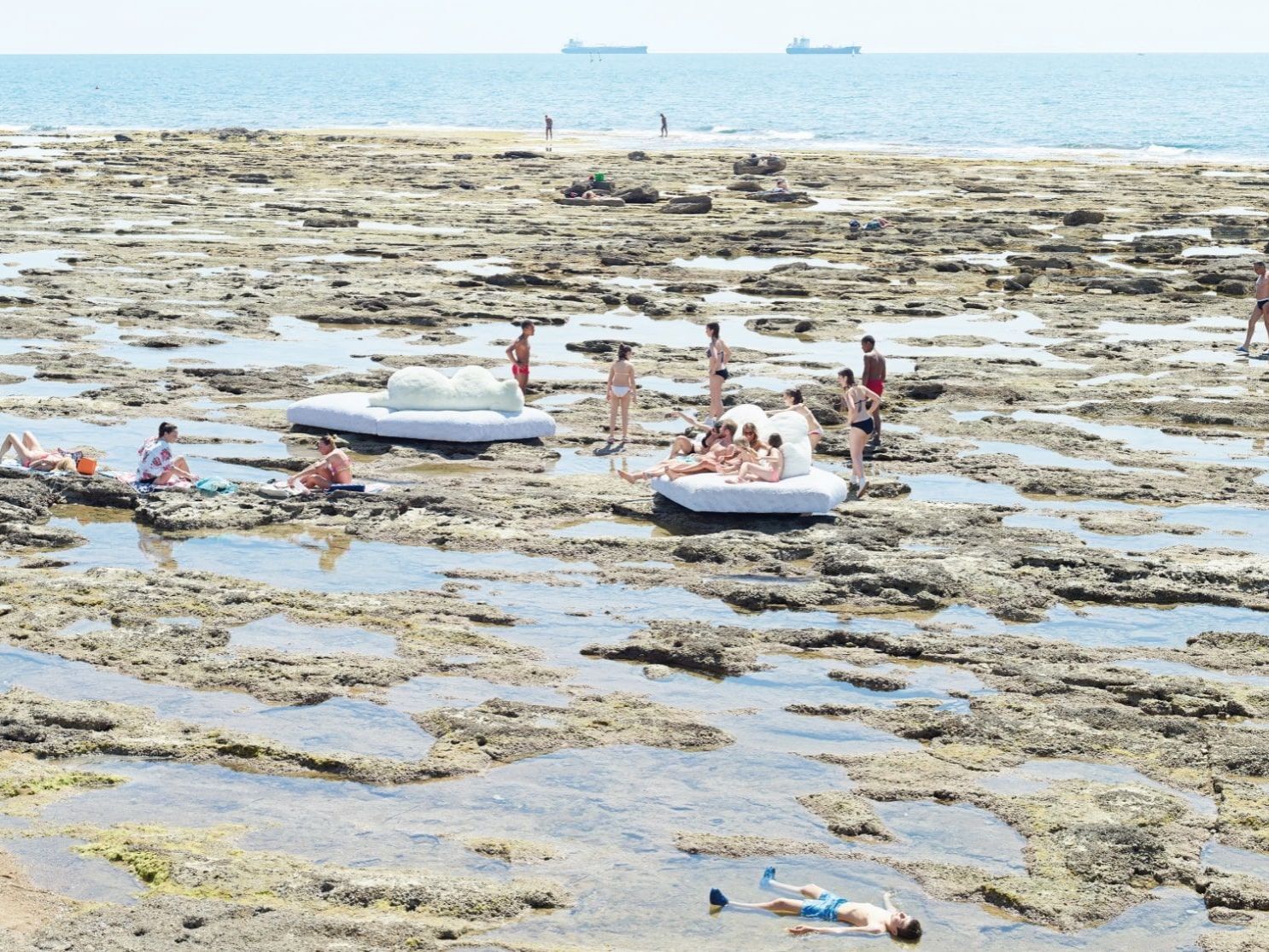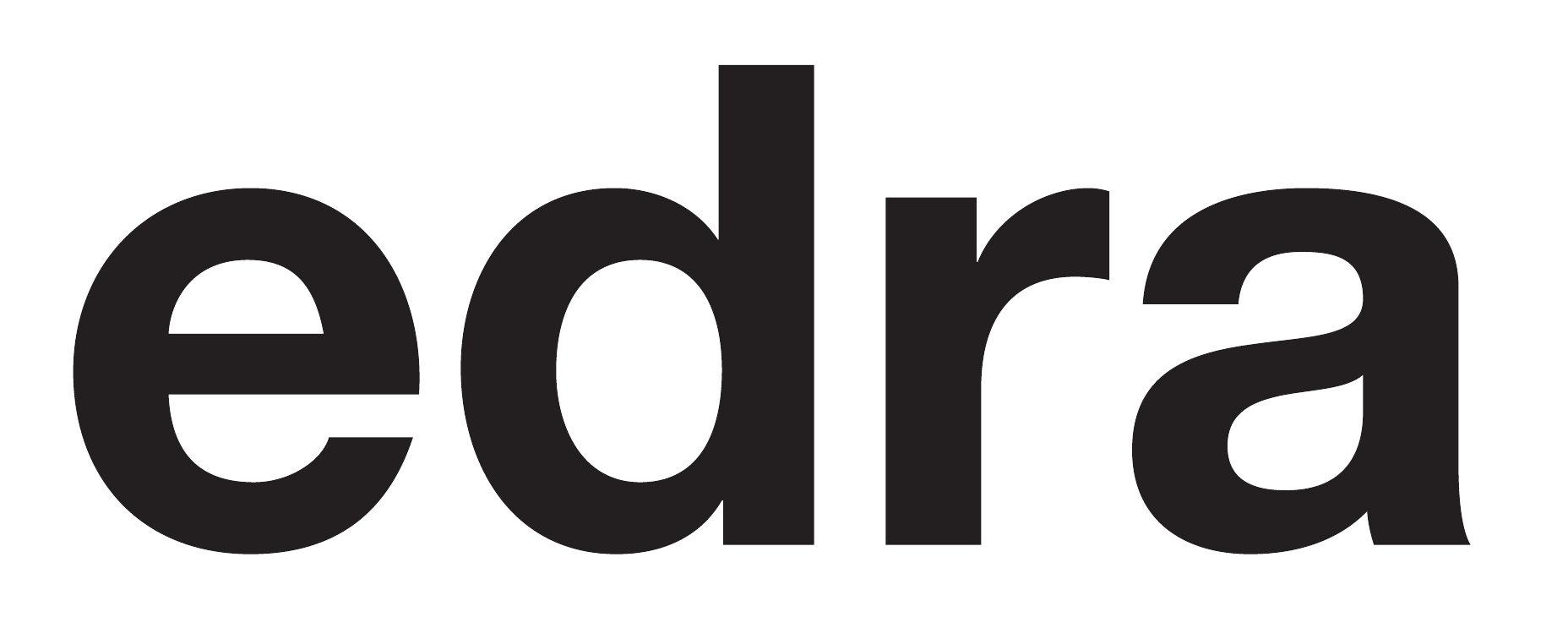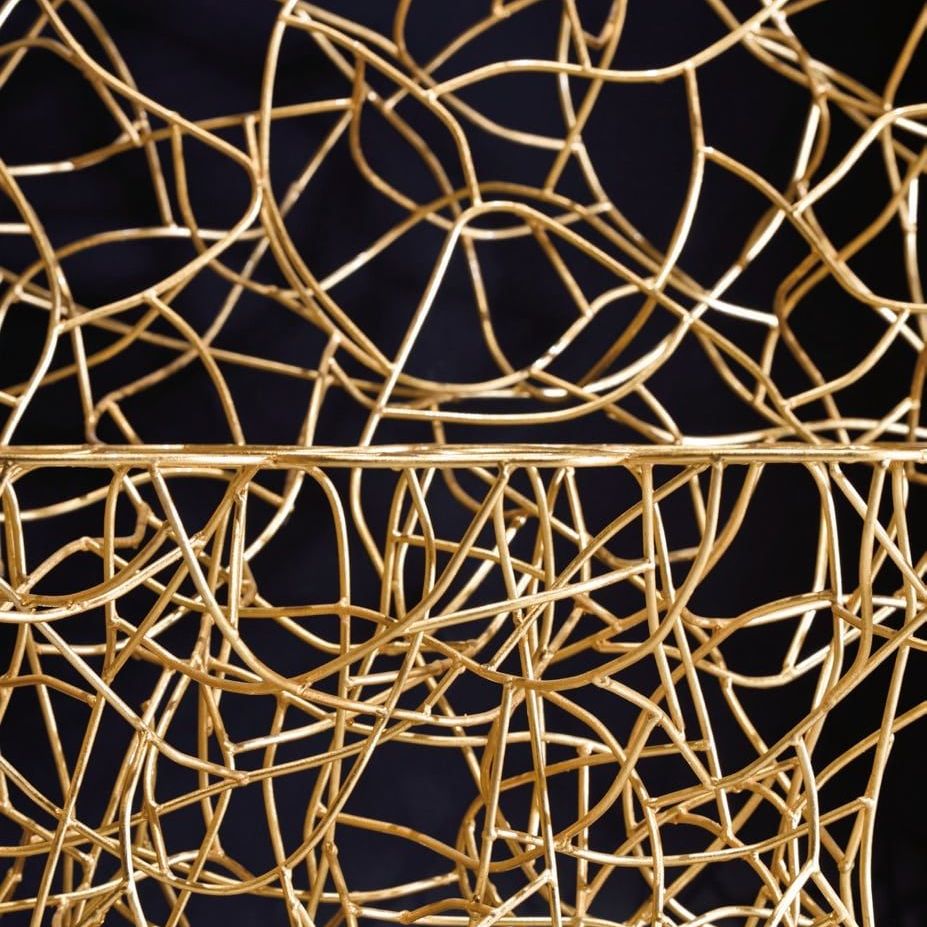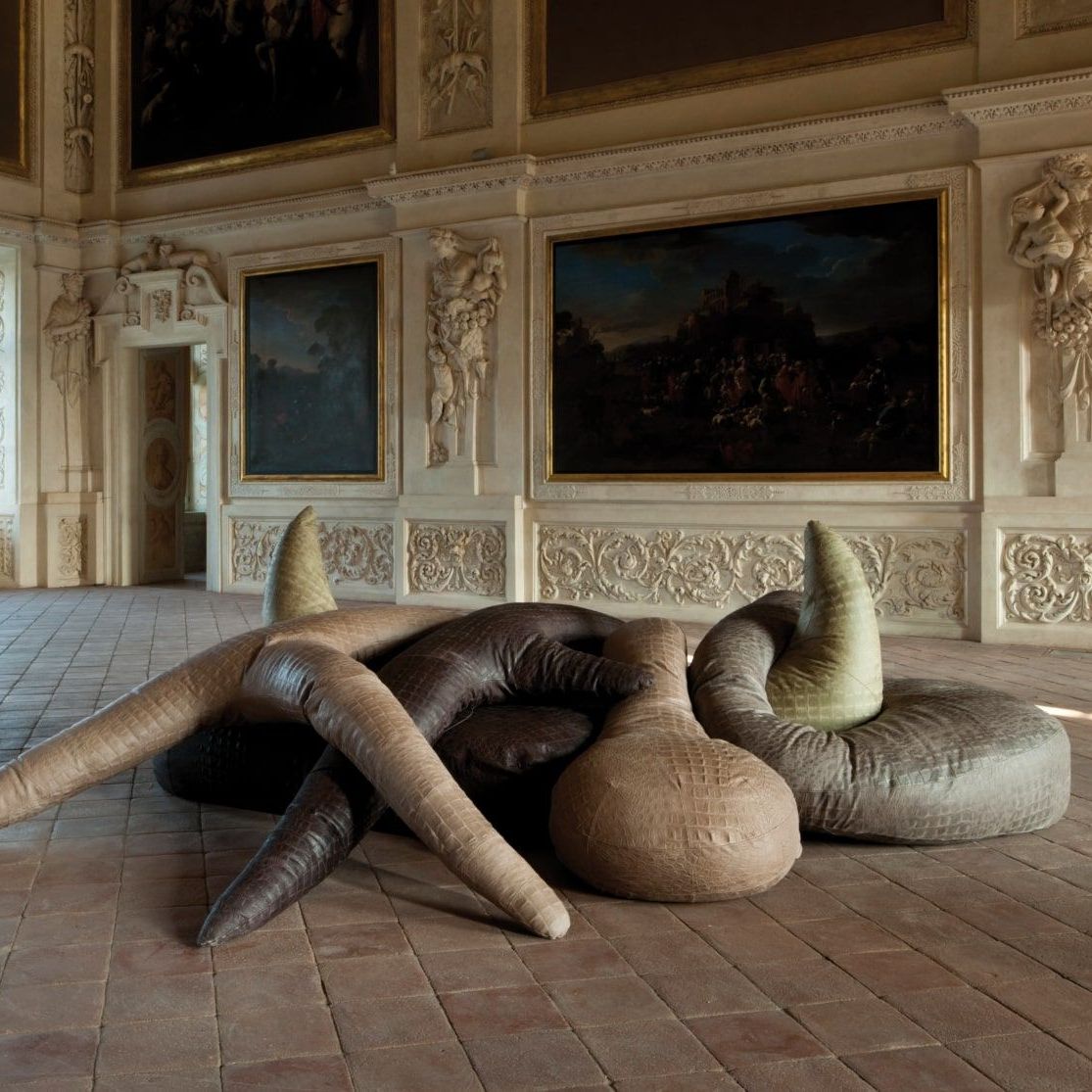
Pack. The sofa photographed by Massimo Vitali on the rocks of Livorno Naval Academy
September 2025
Atlas of an imagined world
Nature as language, relation and sensory landscape
In 1970, in the opening to Words and Things Michel Foucault quotes a famous passage by Borges in which a hypothetical Chinese encyclopaedia classifies animals into fantastical and paradoxical categories such as “belonging to the Emperor”, “madly agitating” or "from afar they look like flies”. Certainly, it is an absurd taxonomy, but no less arbitrary than other systems of classification that in order to exist must pass through a gaze, a language or a conceptual grid. Perhaps also through a desire: of finding order among things, and of finding meaning among forms.
In contemporary design the desire to reconnect with nature has generated an entire universe of bestiaries, herbariums and lapidaries - hybrid, unpredictable, metamorphic - and transferred them into home interiors. In this pulsation of returning a lost naturalness to the places we inhabit, Edra's work stands out like a sensual and visionary atlas where each object appears as a tangible echo of a nature that is other, remote and powerful, sometimes mythological. This is not nature as idyll, or model to imitate, but a force to be evoked and rediscovered.
In 2007, a study on Italian design and the Campana Brothers' "animality" noted that many of their zoomorphic objects are allusive not only in form but in name, for example Boa, Kaiman Jacaré, Corallo and Aster Papposu. This are not simply an affectation but an attempt to establish a semantic, affective relation between form and meaning, to re-semanticize domestic spaces as environments that welcome back what modernity had expelled: the animal, the organic, the natural.
In the history of furnishing the modern home has long been thought of as a shelter from the wild world, a rational fortress against threat from the outside. Edra’s sofas turn this logic on its head. These are not objects that discipline a space, but organisms occupying it.
Boa sofa is an infinite spiral made of 120 meters of textile tube, wrapped on itself to resemble a giant sleeping snake. The elongated and irregular elements of Kaiman Jacaré are reminiscent of a group of alligators lying in the quiet of hidden shore. Aster Papposus, inspired by luminescent tropical starfish, multi-tentacular, mutant and with no supporting structure, seems to have escaped from the depths of an aquarium, inviting the bodies into immersive liquid postures.
It has been written that these are objects of "moisture", in that their design is dense, sensory, and enveloping, producing tactile sensations before visual ones, with a soft ambiguous materiality that seems to dissolve the boundaries between body and object, between inhabitant and inhabited.
Historia Naturalis, the encyclopaedic work by Pliny the Elder, offers a suggestive key for interpreting these interior landscapes today. This work does not order the natural universe with scientific rigour but explores it as a collection of wonders and prodigies, such as talking animals, flying fish and bleeding plants. Nature for Pliny is a theatre of the implausible and this is also true of Edra's design: objects seem to come from fantastical zoologies, forests of the unconscious, prehistoric seas. Inhabiting becomes a new form of naturalism, not a return to nature but an exercise in imagination.
These are objects that do not furnish, but populate. They do not circumscribe a space, they expand it, become presences. Materials and colours contribute to this "sensibility of naturalness". Surfaces are velvety, porous and lustrous, evoking scales, bark, and animal skins. The interwoven metallic filaments of Corallo are a transposition of the marine organism's calcareous and anarchic complexity. Pictured amid the granite rocks of the Tyrrhenian coast Corallo does not stand out against the nature surrounding it but disappears into it. It does not imitate nature but is immersed in it.
There are other illustrious cases of Edra research and experimentation in the 1990s, such as Island. Designed by Alessandro Mendini, Island presents as a padded archipelago, an organic and abstract platform open to the imagination. Fortuna by Leonardo Volpi, is a vegetal green symmetrical seat lying somewhere between a four-leaf clover and a pop icon.
For Edra nature is not an inventory of form but a world to inhabit. Not a question of "taking inspiration" but of recreating the conditions of surprise and adaptability that belong to the living. Similar to fabled woods and deep seas what counts is not their classification but our immersion in them. Edra projects propose a nature not simply for contemplation but for traversing: tactile, enveloping, total.
Photographer Massimo Vitali, his eye suspended between the theatrical and the anthropological, was able to capture this animist presence with great clarity. His images portraying Francesco Binfaré's Pack on the rocks of Livorno's Naval Academy, portray a scene that is almost post-human: objects no longer as furnishings for interiors but as landscape, integrating with the rocks, the sky, the sea. They do not feel like pieces of furniture transported outdoors, but creatures returned to their original habitat.
So Pack represents the idea of freedom, of complete liberation, but also intimacy, deep affection and animal tenderness. The bear has dual symbolism, the threat, the rupture and risk of drifting away, but also joy, protection and sweetness. The surface is breaking up, like the world we inhabit, but on this ice floe we can still rest, dream and love.
On the Rocks evokes the haphazard forms of a cliff or a primitive encampment, with no rigid modules but an invitation to invent, sit where you like, change position, take something to pieces and recompose it. Again, the body comes before function, and the function is never univocal. This is a sofa that does not delimit space but expands it, its surface a raft, a refuge, a landing place.
It is interesting to observe how, alongside a shimmering metamorphic nature, there is another in Edra: poetic, symbolic, pacific. The Flowers Collection, designed in 1990 by Masanori Umeda, is emblematic. The flower-shaped armchairs evoke the wonder of childhood, the elegance of ritual, the generative power of floral beauty. Getsuen, the moonlit lily born of personal memory, and the sensual and welcoming Rose Chair, are not limited to reproducing nature but interpret its delicacy through technology and artisan work. These pieces bring dream into our living spaces. “I consider myself a magical old man who makes flowers grow,” says Umeda. And his flowers continue to bloom still today.
The same desire to celebrate harmonious and iridescent nature is found in Jacopo Foggini's A'mare Collection, designed for the outdoors but also perfect in indoor spaces, made up of chairs tables and armchairs handcrafted in pure polycarbonate with the transparency and lightness of water. Not only aesthetic, A'mare is an act of love towards the environment, a declaration of fluidity, an invitation to contemplate. Immersed in landscapes this furniture dematerializes, becoming liquid and in dialogue with light, air and time.
And then there are the Materials, a project elevating the concept of upholstery to a component of design process. Edra's materials do not cover; they are living. The Minerals, Gems and Every Stone collections are a declared homage to nature in its most precious and lasting forms. Minerals is inspired by Gold, Calcite, Hematite and more, and their ability to reflect and shine with light and vibrant colours. Gems is inspired by rare iridescent stones such as Malachite, Chalcedony, Sapphire and Carnelian. Each fabric is multi-sensory, three-dimensional, brought alive by brilliant threads and chromatic depths. Every Stone transforms marble into fabric. Nine variations, evoking natural stone from Statuary White to Nero Marquinia, are suitable for outdoor use but also poetic indoors. These surfaces are universal, capable of suggesting memory, duration and strength.
Taken together these zoomorphic, phytomorphic and lapidary presences - of animal, plant and stone - make up a sort of domestic ark, a sentimental collection of forms and beings that inhabit spaces as if from another world. They do not simply represent nature, but are possible manifestations of it, thresholds towards other ways of inhabiting.
For Edra, nature is not an inventory but a language: a language that does not speak of function but of relations. Each object, as with Borges' encyclopaedia and Pliny's inventory, can be the sign of an imaginary classification, of a world not yet existing but already desired.
Nature has returned to the centre of discourse in contemporary design, not only as a stylistic feature but as an urgency. Ecology is a new aesthetic. Organic forms, imperfect surfaces and the logic of mutation have entered the language of project as a response to technical rigidity and automated coldness. We seek nature that is not idealised but possible.
Not a nostalgia for Eden but an open laboratory.
Edra proposes nature not as representation but as construct.
Nature to traverse. Nature to inhabit.











